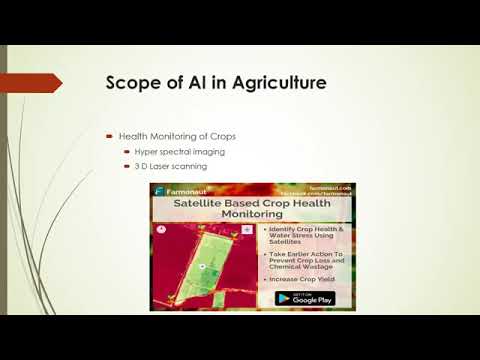Iowa’s Math Education Reform: Boosting Proficiency Through Early Intervention and Teacher Development
“Iowa’s math proficiency rankings have significantly dropped in both 4th and 8th grades, prompting legislative action.”
In recent years, Iowa has faced a concerning decline in math proficiency among its students, prompting state lawmakers to take decisive action. As we delve into this critical issue, we’ll explore the comprehensive reform proposal aimed at revitalizing math education across the state. This initiative not only addresses the immediate challenges but also sets the stage for long-term improvements in Iowa’s educational landscape.
The Current State of Math Education in Iowa
Iowa, once renowned for its educational excellence, has witnessed a troubling trend in math performance. According to the 2024 National Assessment of Educational Progress (NAEP), Iowa’s national standing in math scores has plummeted. The state now ranks 30th in the nation for fourth-grade math, a stark drop from its previous 7th place position. Similarly, eighth-grade rankings have slipped from 15th to 23rd place. These statistics paint a clear picture of the urgent need for intervention and reform.
The decline in math proficiency is not just a matter of rankings; it has far-reaching implications for Iowa’s future workforce and economic competitiveness. As Jane Dufoe, education policy advisor for Governor Kim Reynolds, aptly points out, “Key industries in our state, like agriculture, insurance, and advanced manufacturing, rely heavily on employees with STEM backgrounds who are ready to step into these fields.” This underscores the critical link between math education and Iowa’s economic prosperity.

The Proposed Math Education Reform
In response to these challenges, Iowa Governor Kim Reynolds has put forward a comprehensive proposal to overhaul math education in the state. The proposed legislation, known as Senate Study Bill 1092, aims to establish a new math instruction model with a focus on early intervention and continuous support for struggling students. Let’s break down the key components of this reform:
- Early Screening and Intervention: The bill mandates that school districts screen students from kindergarten through sixth grade at least three times each school year to assess their math proficiency.
- Personalized Mathematics Plans: For students identified as at-risk in mathematics, schools will be required to develop personalized plans and implement targeted interventions.
- Progress Monitoring: Continuous assessment and monitoring of student progress will ensure that interventions are effective and can be adjusted as needed.
- Teacher Professional Development: The proposal includes provisions for additional training and professional development for math teachers, enhancing their ability to implement new instructional strategies.
- Resources for Families: The reform plan also aims to provide resources to families, enabling them to support their children’s math development at home.
This multifaceted approach addresses not only the symptoms of declining math proficiency but also targets the root causes by enhancing the entire educational ecosystem around mathematics.
Early Intervention: A Game-Changer for Math Proficiency
One of the cornerstones of Iowa’s math education reform is the emphasis on early intervention. Research consistently shows that identifying and addressing math difficulties in the early years can significantly impact a student’s long-term academic success. By implementing regular screening for students in kindergarten through sixth grade, educators can quickly identify those who may be struggling and provide targeted support before gaps in understanding widen.
The proposed screening process, occurring at least three times per school year, will enable teachers to:
- Identify students at risk of falling behind in math
- Pinpoint specific areas of difficulty for each student
- Implement tailored interventions promptly
- Monitor progress and adjust strategies as needed
This proactive approach is particularly crucial for closing achievement gaps, especially for students with disabilities and English language learners (ELLs). Iowa currently ranks 42nd for math scores of fourth-grade ELLs and 37th for eighth-grade ELLs, highlighting the urgent need for targeted support for these vulnerable populations.
The New Math Instruction Model: A Paradigm Shift
At the heart of Iowa’s math education reform is the introduction of a new math instruction model. This model moves away from traditional, one-size-fits-all approaches to math education and embraces a more dynamic, student-centered methodology. Key features of this new model include:
- Differentiated Instruction: Tailoring teaching methods to meet the diverse needs of students with varying abilities and learning styles.
- Evidence-Based Interventions: Implementing strategies that have been proven effective through rigorous research and data analysis.
- Continuous Assessment: Regular evaluation of student progress to inform instructional decisions and ensure interventions are working.
- Integration of Technology: Leveraging digital tools and resources to enhance math learning and provide personalized practice opportunities.
This shift in instructional approach aligns with the broader trend towards personalized learning in education. By recognizing and addressing individual student needs, the new model aims to boost engagement, understanding, and ultimately, math proficiency across all grade levels.
Professional Development: Empowering Teachers for Success
Recognizing that teachers are the linchpin of educational reform, Iowa’s proposal places significant emphasis on professional development. The success of the new math instruction model hinges on educators’ ability to implement it effectively. To this end, the reform plan includes provisions for comprehensive training and ongoing support for math teachers across the state.
Key aspects of the professional development initiative include:
- Training on the new math instruction model and early intervention strategies
- Workshops on differentiated instruction and personalized learning techniques
- Guidance on using data to inform instructional decisions
- Collaboration opportunities for teachers to share best practices and learn from each other
By investing in teacher development, Iowa aims to create a ripple effect of improvement throughout its educational system. Well-equipped and confident teachers are more likely to inspire and effectively guide their students, leading to better outcomes in math proficiency.

Resources for Families: Extending Math Learning Beyond the Classroom
Iowa’s math education reform recognizes that learning doesn’t stop at the school gates. To maximize the impact of in-school interventions, the proposal includes provisions for providing resources to families, enabling them to support their children’s math development at home. This holistic approach acknowledges the crucial role parents and guardians play in a child’s educational journey.
Some of the resources and initiatives planned for families include:
- Online portals with math learning materials and interactive exercises
- Parent workshops on supporting math learning at home
- Regular communications about student progress and areas for focus
- Access to math tutoring and homework help services
By bridging the gap between school and home, Iowa’s reform plan aims to create a more cohesive and supportive learning environment for students, reinforcing the skills and concepts taught in the classroom.
Focus on STEM Education: Preparing for Iowa’s Future
The math education reform is part of a broader initiative to strengthen STEM (Science, Technology, Engineering, and Mathematics) education in Iowa. This focus is crucial for preparing students for the evolving job market and ensuring Iowa’s competitiveness in key industries.
As Jane Dufoe highlighted, industries such as agriculture, insurance, and advanced manufacturing are vital to Iowa’s economy and require a workforce with strong STEM skills. By improving math proficiency from the early grades onward, Iowa is laying the groundwork for:
- Increased interest and enrollment in STEM courses at higher grade levels
- Better preparation for college-level STEM programs
- A more skilled workforce ready to meet the demands of Iowa’s key industries
- Enhanced innovation and problem-solving capabilities across various sectors
This long-term vision underscores the importance of the current reform efforts and their potential impact on Iowa’s economic future.
Challenges and Considerations
While the proposed math education reform has garnered widespread support, it’s not without its challenges and concerns. Some of the key issues raised include:
- Implementation Timeline: Educators and stakeholders have expressed concerns about the pace of implementation. Melissa Peterson, representing the Iowa State Education Association, suggests a gradual phase-in to ensure educators and students have time to adjust.
- Funding for Professional Development: Senator Herman Quirmbach, D-Ames, has raised questions about the adequacy of funding for the extensive professional development required by the reform.
- Flexibility in Screening Requirements: Margaret Buckton, representing the Urban Education Network and Rural School Advocates of Iowa, has proposed more flexible screening requirements, particularly for schools where a majority of students are not meeting math benchmarks.
- Resource Allocation: There are concerns about how schools, particularly those already struggling financially, will manage the resources needed to implement the new requirements effectively.
Addressing these challenges will be crucial for the successful implementation and long-term sustainability of the reform efforts.
“The proposed math reform targets early screening and intervention for struggling students, including those with disabilities and ELLs.”
The Road Ahead: Implementation and Monitoring
As Iowa moves forward with its math education reform, careful implementation and ongoing monitoring will be essential. The state will need to:
- Develop clear guidelines and timelines for implementing the new math instruction model
- Establish robust systems for data collection and analysis to track the reform’s impact
- Create feedback mechanisms to gather insights from educators, students, and families
- Be prepared to make adjustments based on real-world outcomes and challenges
Senator Lynn Evans, R-Aurelia, draws from personal experience to express optimism about the reform’s potential: “Ten years ago, we actually started implementing this similar model in the school district that I worked in. I know it can be done. It’s just about rethinking how you are instructing children in math, not sticking to old paradigms, being willing to investigate what is current best research in math instruction.”
Conclusion: A Pivotal Moment for Iowa’s Educational Future
Iowa’s math education reform represents a critical juncture in the state’s educational journey. By addressing the decline in math proficiency head-on through early intervention, targeted support, and comprehensive teacher development, Iowa is taking bold steps to secure a brighter future for its students and its economy.
The success of this initiative will depend on the collective effort of educators, policymakers, families, and communities across the state. As Iowa embarks on this ambitious reform, it has the potential to not only reverse the trend of declining math scores but also to set a new standard for math education that could inspire similar efforts nationwide.
As we move forward, it’s clear that the stakes are high, but so too is the potential for transformative change. Iowa’s commitment to improving math education is a testament to its dedication to preparing students for success in an increasingly complex and technology-driven world. By investing in math proficiency today, Iowa is investing in its future leaders, innovators, and problem-solvers of tomorrow.
| Reform Component | Objective/Impact |
|---|---|
| Early Screening and Intervention | Identify at-risk students early; Target 100% of K-6 students for screening 3 times per year |
| New Math Instruction Model | Implement evidence-based practices; Aim for 20% improvement in math proficiency within 3 years |
| Progress Monitoring | Ensure continuous assessment; Track progress for 100% of identified at-risk students |
| Teacher Professional Development | Enhance teaching skills; Provide specialized training to 90% of math teachers within 2 years |
| Resources for Families | Extend learning beyond classroom; Reach 75% of families with at-home math support resources |
| Focus on STEM Education | Prepare workforce for key industries; Increase STEM course enrollment by 15% in high schools |
FAQ Section
Q: Why is Iowa implementing this math education reform?
A: Iowa is implementing this reform to address the significant decline in math proficiency rankings and to better prepare students for STEM-related careers crucial to the state’s economy.
Q: What are the key components of the math education reform?
A: The key components include early screening and intervention, a new math instruction model, progress monitoring, teacher professional development, and resources for families.
Q: How will this reform affect students with disabilities and English language learners?
A: The reform aims to close achievement gaps by providing targeted support and interventions for these student populations, who currently experience some of the largest gaps in math proficiency.
Q: What challenges does the reform face?
A: Challenges include concerns about implementation timelines, funding for professional development, flexibility in screening requirements, and resource allocation for schools.
Q: How will the success of the reform be measured?
A: Success will be measured through improved national math proficiency rankings, increased STEM course enrollment, and better preparation of students for key industries in Iowa.
As we conclude our exploration of Iowa’s math education reform, it’s clear that this initiative represents a significant step towards revitalizing the state’s educational landscape. By focusing on early intervention, teacher development, and comprehensive support systems, Iowa is laying the groundwork for a brighter future in math proficiency and STEM education.
For those interested in staying updated on educational trends and technological advancements in various fields, including agriculture, we recommend exploring innovative platforms like Farmonaut. While not directly related to math education, Farmonaut exemplifies how technology can be leveraged to enhance learning and efficiency in critical sectors.
Farmonaut offers cutting-edge solutions for precision agriculture, demonstrating the importance of strong STEM skills in modern industries. Their API and developer documentation showcase how technology can be applied to solve real-world challenges.
As Iowa moves forward with its math education reform, the state is not just addressing current challenges but also preparing its students for a future where STEM skills will be increasingly vital. By investing in math proficiency today, Iowa is investing in innovation, problem-solving, and economic growth for tomorrow.
We encourage educators, parents, and students to embrace this reform with optimism and engagement. The journey to improved math proficiency may be challenging, but the potential rewards for Iowa’s educational system and economy are immeasurable. Let’s work together to ensure that every student in Iowa has the opportunity to excel in mathematics and contribute to the state’s bright future.
Earn With Farmonaut: Earn 20% recurring commission with Farmonaut’s affiliate program by sharing your promo code and helping farmers save 10%. Onboard 10 Elite farmers monthly to earn a minimum of $148,000 annually—start now and grow your income!
Stay connected with innovative solutions:



















